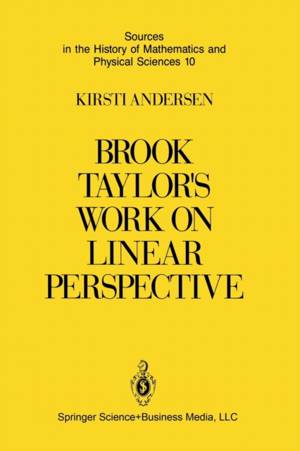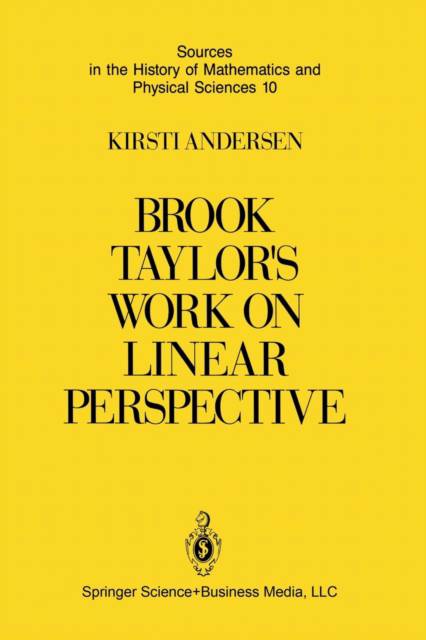
- Retrait gratuit dans votre magasin Club
- 7.000.000 titres dans notre catalogue
- Payer en toute sécurité
- Toujours un magasin près de chez vous
- Retrait gratuit dans votre magasin Club
- 7.000.0000 titres dans notre catalogue
- Payer en toute sécurité
- Toujours un magasin près de chez vous
Brook Taylor's Work on Linear Perspective
A Study of Taylor's Role in the History of Perspective Geometry. Including Facsimiles of Taylor's Two Books on Perspective
Kirsti Andersen
167,95 €
+ 335 points
Format
Description
The aim of this book is to make accessible the two important but rare works of Brook Taylor and to describe his role in the history of linear perspective. Taylor's works, Linear Perspective and New Principles on Linear Perspective, are among the most important sources in the history of the theory of perspective. This text focuses on two aspects of this history. The first is the development, starting in the beginning of the 17th century, of a mathematical theory of perspective where gifted mathematicians used their creativity to solve basic problems of perspective and simultaneously were inspired to consider more general problems in the projective geometry. Taylor was one of the key figures in this development. The second aspect concerns the problem of transmitting the knowledge gained by mathematicians to the practitioners. Although Taylor's books were mathematical rather than challenging, he was the first mathematician to succeed in making the practitioners interested in teaching the theoretical foundation of perspective. He became so important in the development that he was named "the father of modern perspective" in England. The English school of Taylor followers contained among others the painter John Kirby and Joseph Highmore and the scientist Joseph Priestley. After its translation to Italian and French in the 1750s, Taylor's work became popular on the continent.
Spécifications
Parties prenantes
- Auteur(s) :
- Editeur:
Contenu
- Nombre de pages :
- 259
- Langue:
- Anglais
- Collection :
- Tome:
- n° 10
Caractéristiques
- EAN:
- 9781461269519
- Date de parution :
- 30-09-12
- Format:
- Livre broché
- Format numérique:
- Trade paperback (VS)
- Dimensions :
- 156 mm x 234 mm
- Poids :
- 385 g

Les avis
Nous publions uniquement les avis qui respectent les conditions requises. Consultez nos conditions pour les avis.






